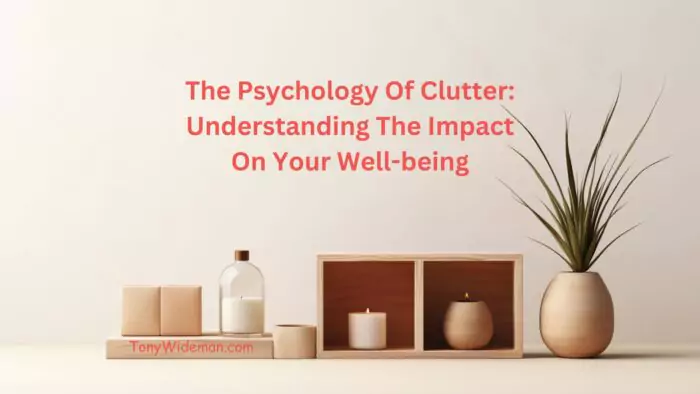Top Stoic Exercises For Personal Growth And Resilience
Emotional resilience is critical in today’s fast-paced, often unpredictable world. Developing a mindset that remains calm under pressure and constructive in challenging times can significantly enhance personal well-being and effectiveness. Stoic philosophy offers a time-tested framework for cultivating resilience and helping individuals face adversity with clarity, strength, and balance. This guide explores top Stoic exercises for emotional resilience, providing detailed strategies to incorporate Stoic wisdom into daily life.
Top Stoic Exercises
Stoicism is like the ancient philosopher’s toolkit for life. It was a philosophy born in the burnished streets of Athens, but its principles still ring true today. Stoicism is centered around enduring hardship with grace and finding peace within oneself, regardless of what life throws our way.
Why turn to Stoicism now, you ask? Because in a world that hustles and bustles at breakneck speed, a little ancient wisdom can go a long way in keeping us grounded. So many of us are searching for calm amidst chaos, clarity among confusion, and a sense of purpose. Understanding Stoic philosophy can be the compass toward personal growth and resilience.
Core values like wisdom, courage, justice, and temperance are at the heart of Stoicism. It’s about living in harmony with nature, accepting things outside our control, and harnessing our inner strength.
Building resilience and fostering personal growth is like having a superhero power. In today’s world, where pressures stack up, and setbacks come knocking, the ability to bounce back and grow can make all the difference. Stoicism equips us with practical strategies to do exactly that, helping build a stronger, more adaptable ‘you’.
Your link textUnderstanding Emotional Resilience Through Stoicism
Emotional resilience is the capacity to recover from setbacks, adapt to change, and maintain focus in stressful situations. Stoicism, a philosophy from ancient Greece, emphasizes rational thinking and accepting events outside one’s control, making it an ideal approach for building this resilience. Central to Stoic philosophy are concepts such as the dichotomy of control, acceptance of impermanence, and living by nature—all of which contribute to a resilient mindset.
Practical Stoic Exercises to Enhance Personal Growth
Journaling is like your personal counselor on paper, guiding you to dig deep and understand your mind better. When you jot down your thoughts at the end of each day, you create a space for reflection and gratitude. It’s powerful how writing down just a few things you’re thankful for can shift your mindset from stress and worry to calm and contentment.
The ‘Dichotomy of Control’ is like having a mental compass. This exercise helps clear the fog of stress by distinguishing between what’s within your control and what isn’t. Focusing on what you can change and letting go of the rest can work wonders for your mental health.
Then there’s negative visualization. Sounds a bit daunting, right? But it’s surprisingly effective. By visualizing worst-case scenarios, you prepare yourself to appreciate what you have and understand the transient nature of life. It heightens your gratitude and resilience, recharging your spirit amid life’s ups and downs.
Mental ‘time travel’ is another fascinating exercise. By projecting your thoughts into the future and the past like beams of light, you gain perspective on current challenges, making today’s problems feel a bit less overwhelming.
Lastly, Stoic-inspired mindfulness and meditation aren’t just about sitting cross-legged and contemplating life. It’s about finding moments of peace, even if just for a minute, amidst a busy day. By regularly practicing mindfulness, you cultivate a space within your mind that remains untouched by daily chaos.
Embracing Top Stoic Exercises isn’t about overnight transformation. It’s about slowly chipping away at the old you to reveal someone tougher, calmer, and more in tune with life’s rhythm. These exercises are stepping stones on your journey towards personal growth.
The Dichotomy of Control: Focusing on What We Can Change
At the heart of Stoic philosophy is the dichotomy of control. This principle helps us focus energy on what we can influence, letting go of the worry over factors beyond our control. Practicing this form of mindfulness allows individuals to remain grounded, even in adversity.
Practical Exercise: The Circle of Influence
- Identify Concerns: List worries and challenges currently on your mind.
- Categorize by Control: Separate these concerns into two categories—those you can control and those you cannot.
- Refocus Effort: For things within your control, outline specific actions. For those outside your control, practice acceptance.
This exercise trains the mind to invest energy wisely, enhancing resilience by preventing emotional burnout over unchangeable factors.
Practicing Negative Visualization: Preparing for Adversity
Negative visualization—imagining potential challenges—helps individuals mentally prepare for adverse events. This Stoic exercise does not foster pessimism but cultivates preparedness, reducing the emotional shock of unexpected events.
Practical Exercise: Scenario Planning
- Select an Area of Concern: Focus on one specific aspect of your life (e.g., career, relationships, health).
- Visualize Adversities: Imagine potential setbacks or challenges in this area.
- Prepare Emotionally: Consider how you might respond calmly and constructively if these situations arise.
Negative visualization strengthens resilience by reducing the impact of fear and anxiety about the future. This mental preparation empowers us to act rationally and decisively when challenges arise.
Practicing Mindfulness: Observing Thoughts and Emotions
Stoic philosophy encourages awareness of one’s thoughts and emotions without attachment or judgment. Mindfulness helps build resilience by preventing impulsive reactions and enabling thoughtful responses under challenging situations.
Top Stoic Exercises: The Daily Self-Reflection
- Set Aside Reflection Time: Dedicate a few minutes each evening for self-reflection.
- Observe Thoughts and Emotions: Reflect on any significant emotions experienced throughout the day, analyzing the causes and your responses.
- Seek Lessons: Identify any lessons learned or improvements for future situations.
This practice cultivates resilience by promoting emotional intelligence and helping individuals develop calm, considered reactions.
Embracing Impermanence: Cultivating Detachment from Outcomes
Acceptance of impermanence is a core Stoic principle. They recognize that all external circumstances, including successes and challenges, are temporary and foster a balanced mindset. By embracing the transitory nature of life, individuals build resilience and reduce stress over losses or changes.
Practical Exercise: The Contemplation of Change
- Identify Attachment Points: Consider aspects of your life you feel strongly attached to, such as relationships, possessions, or status.
- Acknowledge Their Temporariness: Reflect on the impermanent nature of these attachments.
- Practice Detachment: Consciously release excessive attachment by understanding that these valuable aspects do not define your core self.
This exercise enhances emotional resilience by reducing dependency on external factors for happiness, fostering a mindset of adaptability and inner strength.
Practicing Amor Fati: Loving One’s Fate
Amor Fati—or “love of fate“—encourages a positive acceptance of all experiences, including hardships. By embracing each event as a necessary part of life’s journey, we develop an attitude of gratitude, resilience, and growth.
Practical Exercise: Gratitude Reframing
- Identify a Challenging Situation: Select a recent difficulty or setback.
- Reflect on Lessons and Growth: Consider how this experience contributed to personal growth or learning.
- Express Gratitude: Cultivate a mindset of appreciation for the experience, focusing on the positives and insights gained.
Amor Fati builds resilience by transforming adversity into opportunities for gratitude and self-development, empowering individuals to face future challenges with optimism.
Building a Daily Stoic Routine for Sustained Resilience
Establishing a daily Stoic routine strengthens resilience by consistently reinforcing Stoic principles. This routine combines various Stoic exercises to develop a well-rounded, resilient mindset.
Sample Daily Routine:
- Morning Reflection: Start with gratitude, acknowledge the day’s opportunities, and mentally prepare for potential challenges.
- Midday Breathing Exercise: Take a few minutes to observe thoughts, checking for impulsive reactions or stressors.
- Evening Self-Reflection: Reflect on emotions experienced, lessons learned, and areas for improvement.
This routine offers a structured approach to incorporating Stoicism into daily life, fostering sustained resilience and adaptabilties.
Cultivating Resilience through Stoic Principles
Acceptance is a biggie when it comes to Stoicism. It acts like armor against life’s unpredictable swings. Accepting things as they are frees you from unnecessary emotional turmoil, allowing you to focus on what truly matters and what you can change.
Facing adversity with the strength of a Stoic isn’t about suppressing emotions. It’s about recognizing them, learning from them, and managing them effectively. It’s like fine-tuning your emotional radar so you’re better equipped to deal with whatever life tosses your way.
Picture real-life heroes who’ve harnessed Stoic practices. Maybe they didn’t shout it from the rooftops, but they overcame incredible challenges by channeling inner stoic strength. Their stories remind us that these ancient exercises can be powerful tools for modern resilience.
Incorporating these practices into your routine isn’t about making drastic changes overnight. It’s about weaving small, impactful habits into your daily life. Start with five minutes of reflection or a morning moment of gratitude. Before you know it, these moments will string together into a more resilient and robust life.
The real magic happens when Stoic principles become second nature, helping you navigate life’s chaos with a clarity and calmness that may have once seemed impossible. Like any skill, resilience takes time and practice—Stoicism offers a roadmap to help you get there.
Conclusion:
The journey to emotional resilience requires consistent practice and a disciplined approach. Through top Stoic exercises such as focusing on the controllable, practicing negative visualization, observing emotions, embracing impermanence, and cultivating amor fati, individuals develop a mindset capable of withstanding life’s adversities. Each exercise contributes to a resilient, balanced outlook, enabling us to approach challenges calmly and constructively.
The more consistently we practice these exercises, the stronger our resilience becomes. Stoic philosophy, grounded in rationality and acceptance, is a timeless guide to fostering inner strength and balance, helping us navigate triumphs and trials with unwavering clarity and composure.







